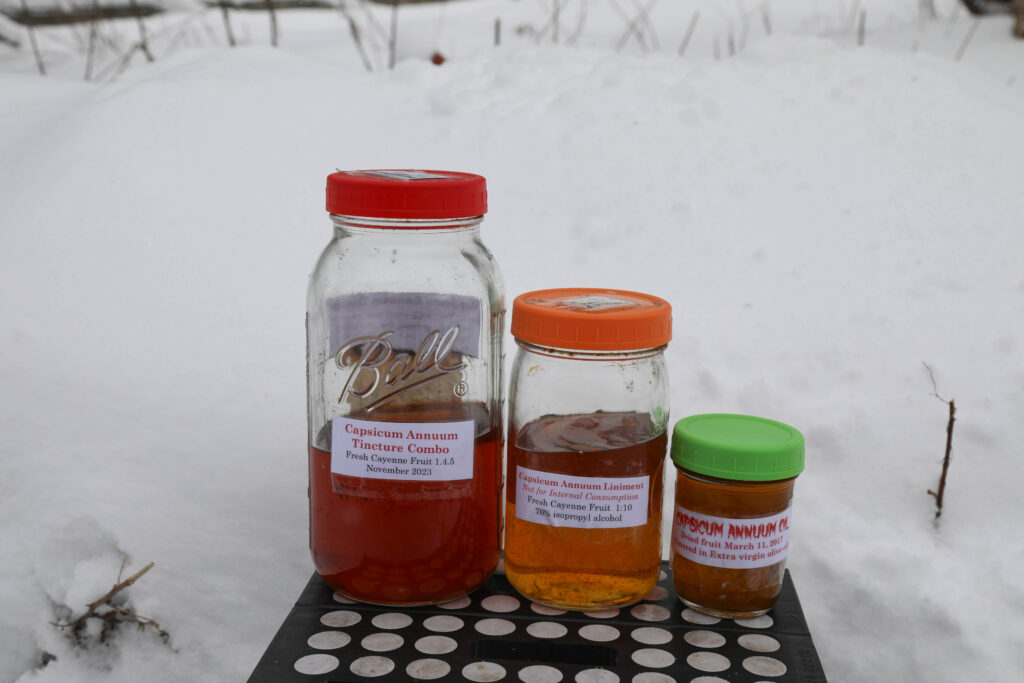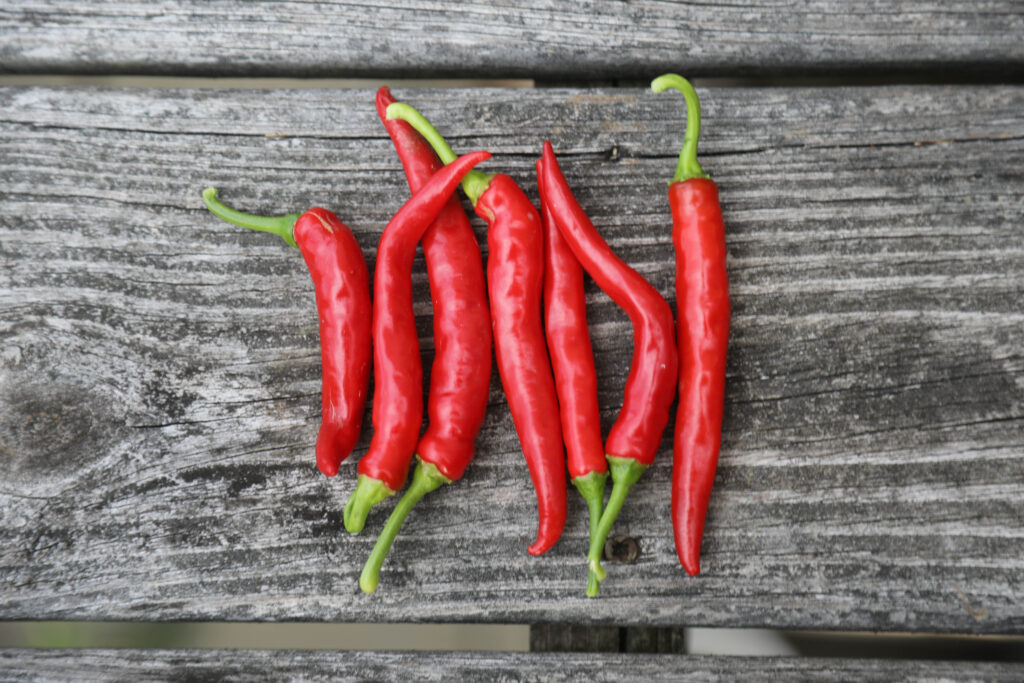
There are many types of Hot peppers, but Cayenne peppers
are the type I use for medicine.
Medicinal Notes
While there are many Capsicum species and varieties, this section will focus on Cayenne peppers, the type I use for medicine. Please see the Safety section before using these peppers internally or externally.
Besides being a tasty spice, Cayenne is a medicinal plant with internal and external uses.
Externally, Cayenne has an analgesic (pain-reducing) effect. Its pain-relieving property is due to the plant’s capsaicin constituent, which binds to substance P receptors in the nerves. This initiates them to fire, causing an initial burning sensation. Following this, there is a reduction of pain due to a depletion of substance P or other effects on the nerve endings.
Conventional plasters containing capsaicin are the most common external preparations. There are also liniments, ointments, and creams. These are used for their analgesic effect on sore muscles, joints, back, and neuropathic pain.
I have read some studies on Cayenne reducing fibromyalgia pain. I have not tried it yet, but I am hoping folks reading this may try it and let me know if it has helped or not.
Many people find these external preparations too irritating and uncomfortable and discontinue their use.
If you are preparing your own Capsicum medicines, try them out yourself first to check the magnitude of their heat.
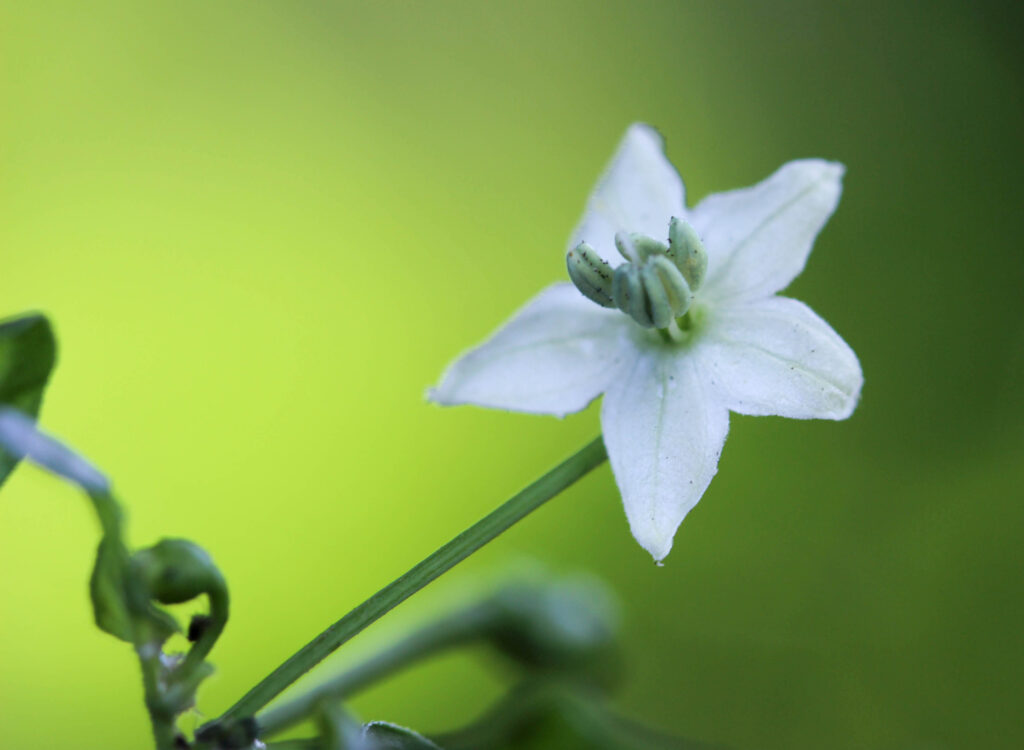
Cayenne is also a rubefacient (also called a counter-irritant) producing warmth and reddening of the skin due to vasodilation of local blood vessels. This is one of the ways that it may decrease local pain.
Cayenne can also increase the bioavailability of other herbs through its vasodilating effect. This increases blood flow to the surface of the skin externally or through the digestive tract and blood vessels internally, allowing herbs deeper access into other tissues. The downside is that when used internally, it may create some digestive discomfort.
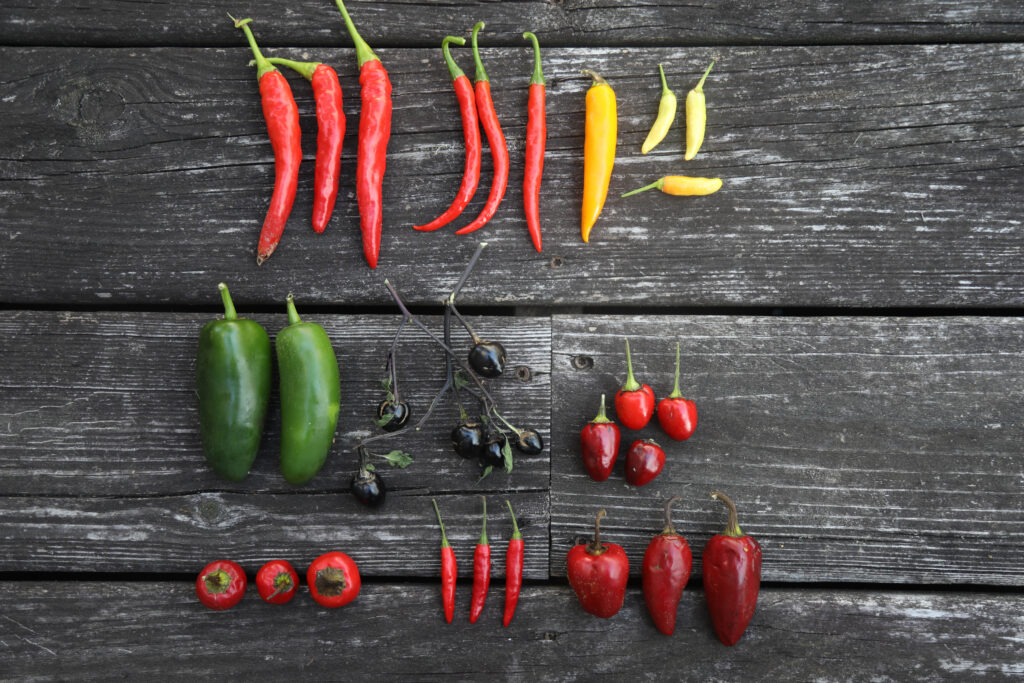
Bulgarian carrot pepper, Tabasco pepper. Middle row: Jalapeño pepper,
Peruvian purple pepper (immature, black), Peruvian purple pepper (mature, red).
Bottom row: Cherry bell pepper, Thai devil hot pepper, Fresno pepper
When I am considering adding Cayenne into an individualized medicine, I ask each person if they like spiciness and then calibrate the amount of Cayenne to their taste. Again, I suggest tasting your medicines before adding them to formulas. I have noticed a big difference in the ‘heat’ of some of the Cayenne preparations.
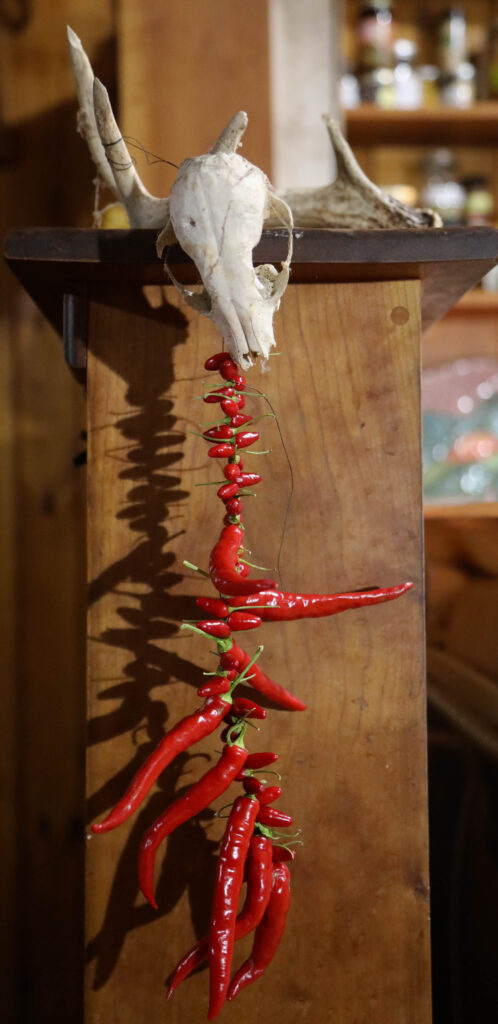
Safety
This probably doesn’t need to be said, but handling Capsicum peppers can cause a painful burning sensation, especially on delicate tissues like the eyes, as well as less delicate skin like the hands.
Internally, it can hurt on the way down as well as on the way out (“burning anus syndrome”).
While the burning sensation is irritating and painful, it does not damage the tissues like a heat or chemical burn. This burning is due to capsaicinoids, the collective term for the compounds causing the pungency (heat) in hot peppers. Capsaicin is the major ‘hot’ component. These constituents are found in varying degrees in hot peppers. They are primarily found in the white placental tissue inside the pepper. They are not found in the seeds, and a lesser amount is contained in the fleshy pepper parts. The more capsaicin, the hotter the pepper. (See Additional Notes about the Scoville Heat Units)
I have found that milk (or similar dairy product) is the best remedy when ‘pepper juice’ gets in your eyes. Dab (not wipe) the area with milk. Make sure to initially wash your hands with dish soap.
Pepper sprays have a 1,250,000 SHU, which is why they are so incapacitating, causing painful burning of the eyes, breathing difficulties, and skin irritation.
Milk is not the best remedy for pepper spray, as it contains other products.
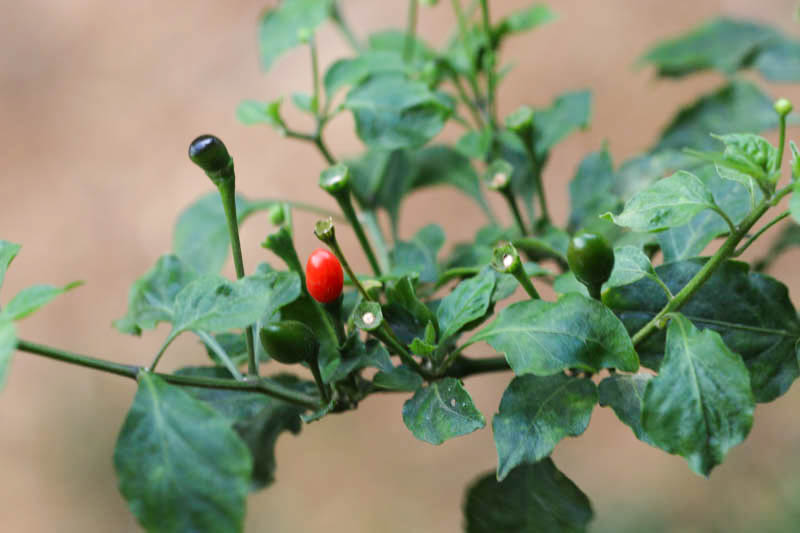
Plant Notes
The name ‘pepper’ comes from piquant, the same with Black pepper (Piper nigrum). Capsicums and Black pepper are not closely related.
All Capsicum species are in the Solanaceae (Nightshade family) and originated in Mexico, Central and South America.
There is botanical contention about Capsicum peppers, whether they are many different species or that many of the species belong to a Capsicum annuum complex. Currently there are about 25 Capsicum species recognized.
The 3 most common culinary and medicinal species are:
- Capsicum annuum (the most common type)-Bell pepper, Cayenne, Jalapeno (called Chipotle when smoked and dried), Hatch chili, Poblano (Ancho when dried).
- frutescens-Tabasco, Thai pepper, many of the colorful upright ornamental peppers
- chinense (includes the hottest peppers)-Habanero, Scotch bonnet, Carolina reaper, Pepper X
Interestingly, birds are unaffected by the heat. And the fruits are brightly colored, so birds are attracted and eat them with impunity while flying off and scattering their seeds. Meanwhile, most mammals and insects leave them alone because of their pungency. A well-evolutionized strategy.
They are fairly easy plants to grow, though they need about 8-12 weeks for the fruits to ripen, depending on the variety. They are susceptible to cold weather.
Capsicums are some of my favorite plants to garden. I greatly admire the various shapes and colors of the fruits. And I am a fan of spicy.
I like to string them up around my home to dry as food and decoration.
These plants are perennial in warm climates.
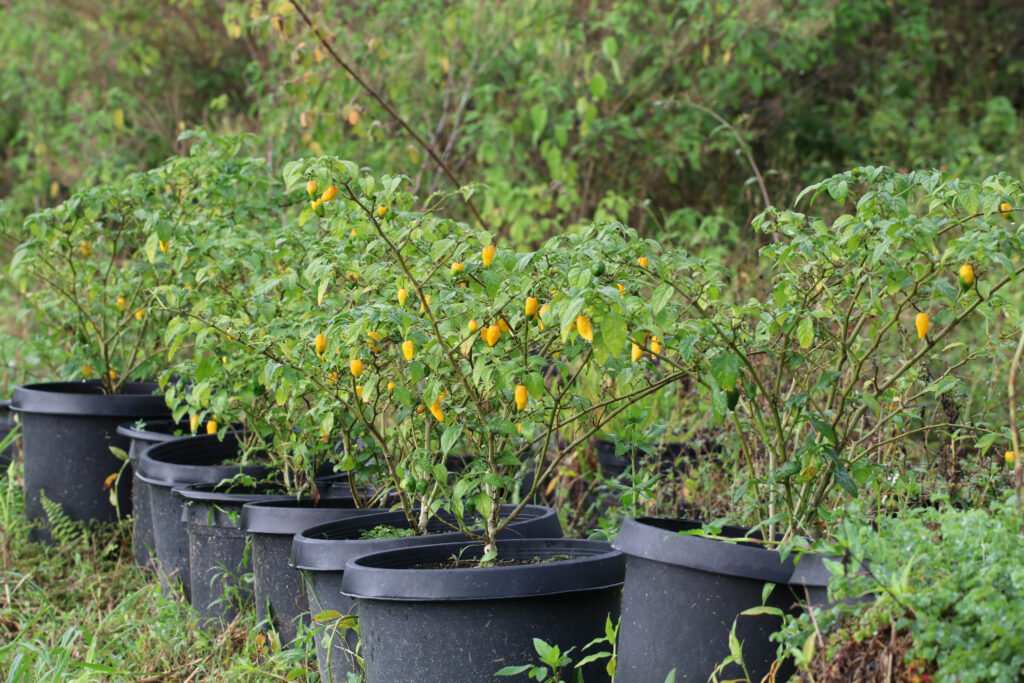
Honaunau, Hawaii
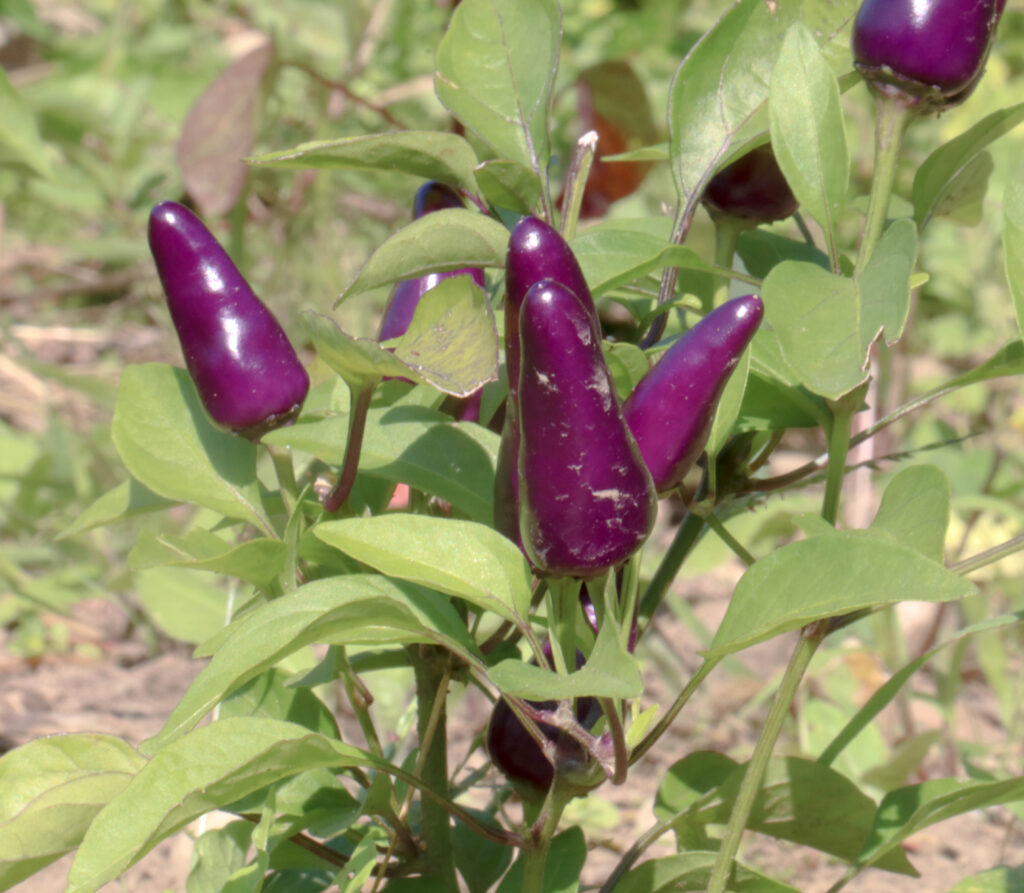
Ithaca, New York
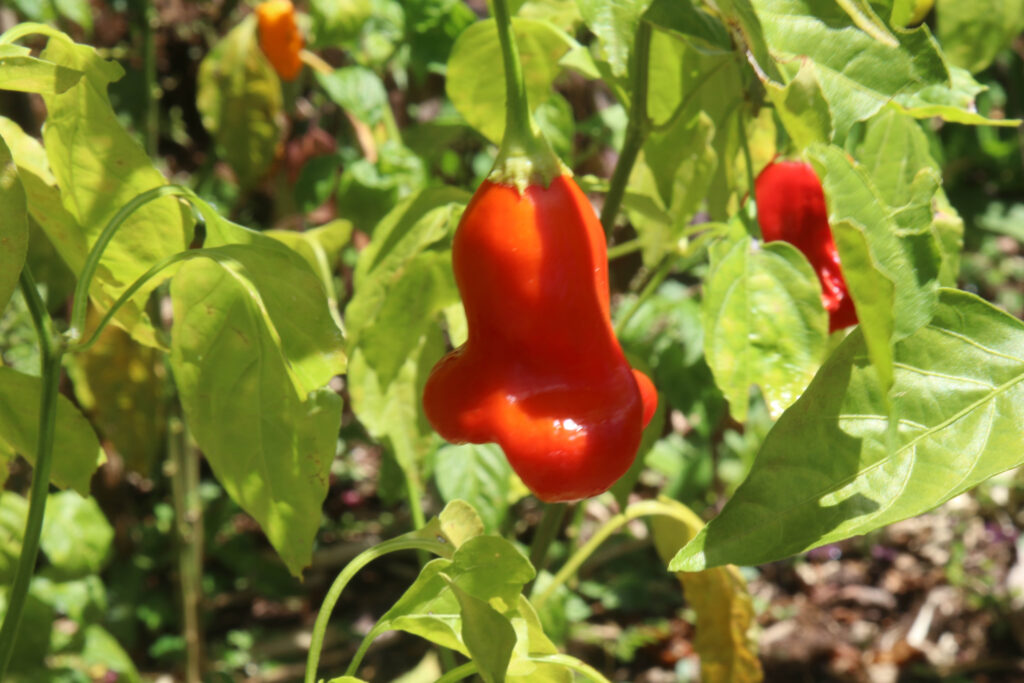
Ark Farm, San Jose, Costa Rica
Additional Notes
One of the advantages of Capsicum species is that they are relatively inexpensive and are commonly found in markets. Plus, if you like spicy food (such as myself), they are delicious.
The pungency or ‘heat’ of a pepper is measured in Scoville heat units (SHU). This is a method where the capsaicinoids are dissolved from the pepper. Previously, tasters would ingest these constituents and rate their pungency, but this is now done in a lab (HPLC). A Bell pepper has 0 SHU, Jalapeños are 2500-8000 SHU, Cayenne 25,000-50,000 SHU, and the current heat winner is Pepper X with a SHU of 2.69 million. This makes Pepper X over 600 times more pungent than a Jalapeño.
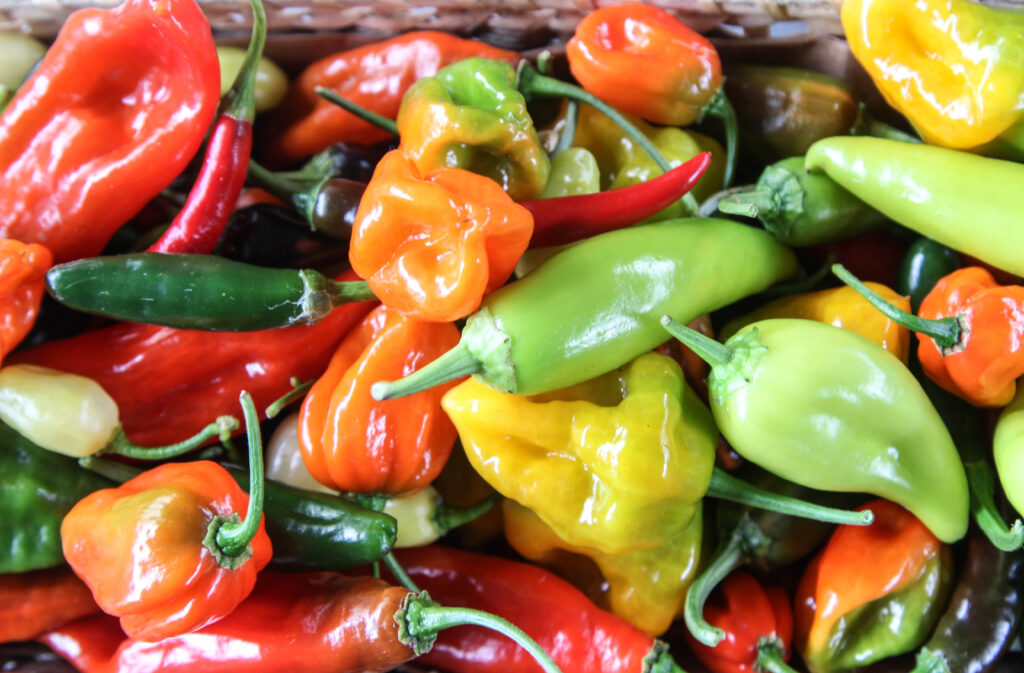
Dosage and Administration
The dosage depends on which preparation it is being used. Be cautious when using the powder, as it can get into tissue and be difficult to remove. As mentioned previously, taste the medicine beforehand to get a sense of its pungency. If you are using it externally, dab some of your skin to see how potent it is.
The dosage varies considerably by a few factors
- Will it be ingested or used topically
- The type of preparation being used (tincture, oil, etc.)
- The sensitivity of the individual
- The specific peppers being used (some being much hotter than others)
When using tinctures internally, I usually add between 2-10 drops per oz, depending on the individual’s preference for spiciness.
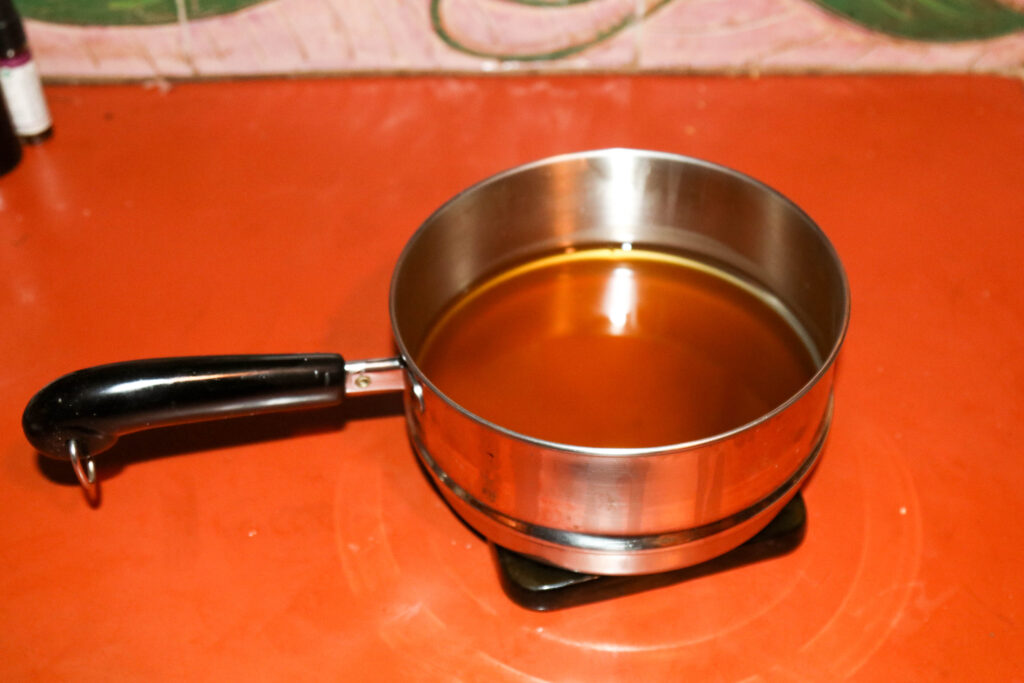
in extra virgin olive oil in a double boiler at a low temperature for
about 2 hours. Later, I added the beeswax at a 1:5 ratio (wax: oil)
until the wax melted and then poured into smaller containers.
Medicine Preparation Notes
I use the oil and liniment externally and the tincture internally. I use fresh, ripe Cayenne-type peppers for all the preparations. I avoid using powdered Cayenne as it is too difficult to filter out and can get stuck in tissue after applying. I am still in the experimental phase with most of these preparations. I usually make a lot (too much?) at a time, and a little goes a long way.
The basic premise is that the more fruit you use and the more pungent the peppers are, the stronger the medicine.
These are some of my recent preparations, but I suggest experimenting with various ratios.
Tincture: Fresh Cayenne fruit 80% ethanol 1:4.5 ratio. Very hot taste.
Liniment: Fresh Cayenne fruit 1:10 in 99% isopropyl alcohol. It feels warm but not too heating on unbroken skin.
Infused oil: Fresh Cayenne fruit slowly warmed in extra virgin olive oil in a double boiler at a low temperature for about 2 hours. It feels slightly warm on unbroken skin.
Salve: Infused cayenne oil warmed in a double boiler and beeswax added at a 1:5 ratio (wax: oil)
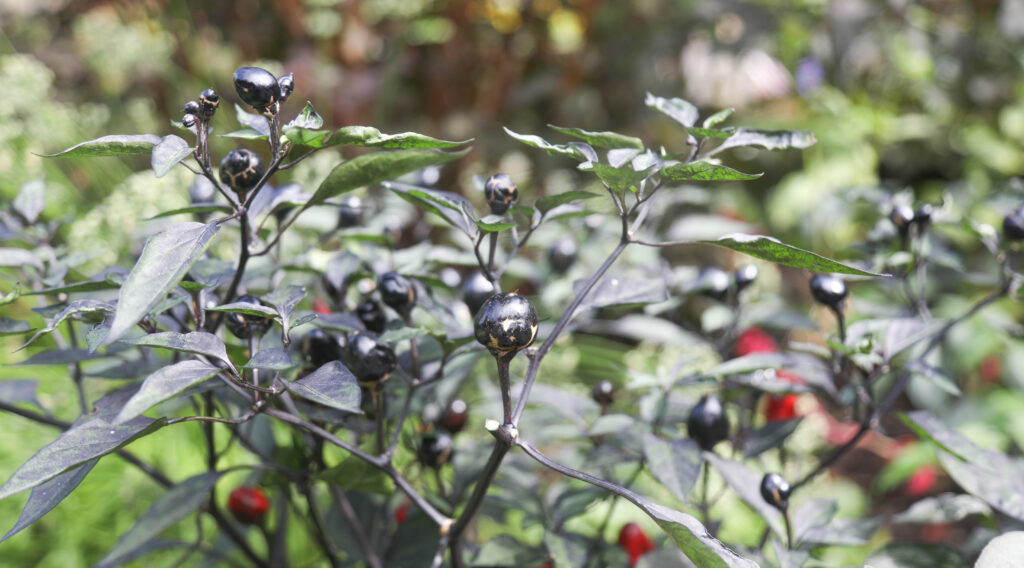
fruits are immature, while the red fruits in the background are ripe.
Cornell Botanic Gardens, Ithaca, New York
Stories: An Imprudent Cayenne Experiment
Some time ago, a nurse practitioner asked me into her office at the Ithaca Free Clinic. She had a patient who had a painful twitching muscle under their eye that sometimes made it difficult for them to open their eye. The patient had seen a few doctors and had tried a number of treatments without success.
I combined Cayenne salve (Capsicum annuum) with St. Johnswort tincture (Hypericum perforatum). I crushed a small amount of each (about 1:1) in a sandwich bag and performed an imprudent experiment. I wanted to know how painful it would be if the patient got a small amount in their eye, so I put a small amount directly into my eye to see how much it would burn. Well, the answer was plenty. Fortunately, there was some milk at the clinic, so I was able to reduce the pain. While certainly a bit foolish, I was glad to get a sense of its burning properties.
Red-eyed, I then described precisely how to use the medicine to the patient, making sure they understood to avoid getting it in their eyes and to wash their hands with soap after applying the salve.
A week later, they came back to get more, as it was the first thing to help. They and I were both enthused about the results.
St. Johnswort can sometimes help with nerve misfiring (the twitching), and the Cayenne was to increase local circulation, increasing the bioavailability of the St. Johnswort.
